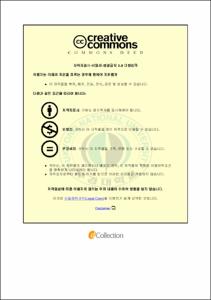고려인삼 세근과 잎 추출물의 항균활성 조사
- Alternative Title
- Antimicrobial Activities of the Extracts of Ginseng Fine Roots and Leaves
- Abstract
- 인삼의 효과적인 이용을 위해 부산물로 취급되어 대부분 폐기되는 세근과 잎을 발효공학적 기법으로 항균성 물질을 증대하기 위한 연구이다.
이를 위해서 발효에 적합한 균주의 선별과 발효에 사용될 인삼 세근과 잎 분말의 농도를 선별하여 발효 시킨 후 항균성 물질을 탐색하였다. 그 결과 8종의 유용 미생물 중 L. plantarum이 가장 적절한 균주로 선정 되었으며, 영양원인 인삼 세근과 잎 분말의 농도는 5%로 밝혀졌다.
세근과 잎 추출물을 이용하여 항균 및 virucidal activity를 조사한 결과, 세근은 발효추출물에서 항균활성은 있으나 항바이러스 활성은 미약한 것으로 나타났고, 잎은 비발효 추출물에서 항균과 항바이러스 활성이 모두 우수한 것으로 밝혀졌다. 이들 추출물이 가지는 항균성 물질은 Gram Positive균주에서 활성이 더 좋은 것으로 분석되었다. 또한, FCV에 대해 virucidal activity를 나타낸 잎의 비발효 추출물은 5 ㎎/㎖의 농도에서 6시간 만에 FCV를 불활성화 시켰으며, 12시간 반응 후에는 가장 낮은 1.25 ㎎/㎖농도에서도 바이러스의 감염이 일어나지 않아 우수한 virucidal activity가 있음을 알 수 있었다.
발효에 의한 항균 및 항바이러스 활성 물질의 성분 변화를 알아 보기 위해서 HPLC 분석법을 사용하여 물질을 분리한 결과, 세근과 잎의 발효추출물에서 각각 ginsenoside Rg1, Re, Rd 성분의 증가와 ginsenoside Re, Rd, Rb1, Rc, Rb2 성분의 감소가 확인되었다. 따라서, 세근 발효 추출물의 항균 활성에 관여하는 물질은 ginsenoside Rg1, Re, Rd 성분이며, 잎 비발효 추출물의 항균 활성은 세근 발효 추출물과 비교하였을 때 ginsenoside Re, Rd 성분, virucidal activity에 관여하는 물질은 ginsenoside Rb1, Rc, Rb2 성분인 것으로 추정되었다.
따라서 인삼의 세근과 잎을 부산물로 취급하여 폐기하거나, 겨울철 낙엽으로 치부하기 보다는 본 연구를 통해 얻어진 인삼 잎 자체 추출물과 세근의 발효 추출물의 우수한 항균 및 항바이러스 활성 결과를 토대로 세근과 잎에 함유된 사포닌의 새로운 이용방법 및 상품적 가치를 증대하기 위한 다양한 활용 방안이 모색될 수 있을 것으로 기대된다.
Panax ginseng C.A. Meyer (ginseng), a well-known traditional korean medicine, has been used for several thousand years with mysterious powers in the Orient, Korea ginseng belongs to the Panax genus in the family Araliaceae. It is often referred to as the king of herbs. Several pharmacological activities of saponins have been found in the root of panax ginseng. So far, most studies have been focused on ginseng roots and scientists are less attracted by ginseng fine roots and leaves. However, ginseng fine roots have a higher saponin than main roots and leaves also have higher saponin content than that of the roots (> 4 to 5 times) and stems (> 9 times).
The study was performed to evaluate the antibacterial and antiviral activities of ginseng fine root and leaf in order to search for antibacterial substance. Among8kinds of fermentation strains, Lactobacillus plantarum was selected based on viable cell counts and antibacterial activities during incubation. Optimum fermentation was determined condition and incubation at 35℃ for 48 hr in 5% ginseng broth.
The antibacterial and antiviral activities were investigated from methanolic extracts of ginseng fine roots and leaves (non fermented ginseng; NG, fermented ginseng; FG). Antibacterial activity was tested by paper disc method and shaking flask method, and antiviral activity by 50% tissue culture infectious dose (TCID50).
The results of paper disc method in NG extract and FG extract of Ginseng fine root measured against E. coli was 11㎜ and 20㎜, S. aureus was 15㎜ and 22㎜, respectively. Ginseng leaf was observed that inhibition clear zone of 18.5㎜, 27㎜ against E. coli and S. aureus in NG extract, 16㎜, 19㎜ against E. coli and S. aureus in FG extract. Shaking flask method of ginseng fine root showed that FG extract inhibited the growth of E .coli (99.9%) and S. aureus (99.9%). However, Ginseng leaf was observed that inhibit the growth of 99.9% against E .coli and 100% against S. aureus in NG extract. Comparison of the antibacterial activity of methanolic extracts in ginseng fine roots and leaf, ginseng leaf of NG extract was the best antibacterial activity of the methanolic extracts. Also, ginseng leaf of NG extracts showed the strongest antiviral activities against Feline calicivirus (FCV) as a surrogate for norovirus.
Each of extracts were investigated the compositional changes of ginsenosides on HPLC analysis. As a result, antibacterial activity substance of fermented ginseng fine root extract was determined ginsenoside Rg1, Re and Rd and ginseng leaf extract was determined ginsenoside Re, Rd. Also, virucidal activity substance of ginseng leaf extract was determined ginsenoside Rb1, Rc and Rb2.
The results obtained in this study suggested that the ginseng root and leaf will be effective in the antibacterial and antiviral activities are useful resources.
- Issued Date
- 2012
- Awarded Date
- 2012. 2
- Type
- Dissertation
- Publisher
- 부경대학교 대학원
- Alternative Author(s)
- Ah Reum Kim
- Affiliation
- 부경대학교
- Department
- 대학원 미생물학과
- Advisor
- 이명숙
- Table Of Contents
- 목 차
Abstract v
서론 1
재료 및 방법 3
1. 실험재료 3
1.1. 인삼 부산물 준비 (세근, 잎) 3
1.2. 세균 배양 4
1.3. 숙주세포 배양 및 바이러스 증식 6
2. 실험방법 7
2.1. 일반 성분 분석 7
2.2. 발효를 위한 균주 선별 및 배지 제조 7
2.3. 항균성 물질 추출 8
2.4. 추출물의 항균 활성 평가 9
2.4.1. 디스크 확산법 (paper disc method) 9
2.4.2. 진탕 플라스크법 (shaking flask method) 10
2.5. 추출물의 항바이러스 활성 평가 11
2.6. 추출물의 HPLC 분석 12
결과 및 고찰 14
1. 고려인삼 세근과 잎의 일반 성분 분석 14
2. 발효를 위한 적합 균주 및 배지 농도 선정 16
2.1. 발효 균주 선정 16
2.2. 배지 농도 선정 19
3. 항균 활성 평가 23
3.1. 디스크 확산법 (paper disc method) 24
3.2. 진탕 플라스크법 (shaking flask method) 27
4. 항바이러스 활성 평가 29
5. 추출물의 HPLC 분석 31
요 약 36
감사의 글 38
참고문헌 40
- Degree
- Master
- Files in This Item:
-
-
Download
 고려인삼 세근과 잎 추출물의 항균활성 조사.pdf
기타 데이터 / 758.53 kB / Adobe PDF
고려인삼 세근과 잎 추출물의 항균활성 조사.pdf
기타 데이터 / 758.53 kB / Adobe PDF
-
Items in Repository are protected by copyright, with all rights reserved, unless otherwise indicated.